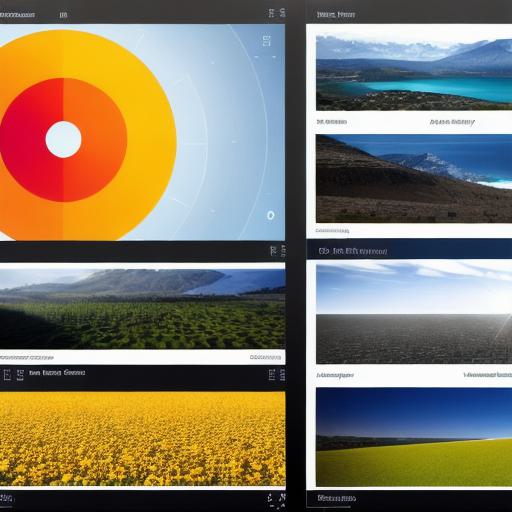Introduction:
The 4Ps strategy is a classic marketing model that involves identifying and satisfying the needs of customers through product, price, promotion, and place. In today’s digital age, marketers have a plethora of tools at their disposal to effectively implement this strategy. In this article, we will explore some of the top marketing tools for each of the 4Ps, along with case studies and expert opinions to help you make informed decisions about which tools are best suited for your business.
Product:
Product is all about meeting the needs and wants of customers through innovation, design, and functionality. Here are some of the top product-related marketing tools:
- Customer feedback tools – These tools allow businesses to gather insights from their customers on what they like and dislike about their products or services. This information can be used to make improvements and enhance customer experience. Examples include SurveyMonkey, Google Forms, and Feedbackify.
- Product analytics tools – These tools help businesses track key performance indicators such as usage rates, engagement, and sales. They also provide insights into user behavior and preferences, which can inform product development. Examples include Mixpanel, Kissmetrics, and Amplitude.
- 3D printing – This technology has revolutionized the way products are designed and manufactured. It allows businesses to quickly create prototypes and test new designs, reducing time-to-market and costs.
- Product reviews and ratings – These tools allow customers to leave feedback on their experiences with products or services, providing valuable insights into areas for improvement and helping to build trust with potential buyers. Examples include Yotpo, Trustpilot, and Bazaarvoice.
Price:
Price is all about determining the value of a product or service in the eyes of customers. Here are some of the top price-related marketing tools:
- Price optimization software – These tools help businesses analyze pricing strategies and optimize prices based on demand and competition. Examples include PricingPage, Tactica, and Revenue Grid.
- Pricing models – There are various pricing models available such as subscription-based, pay-as-you-go, and freemium. Businesses should choose the pricing model that best aligns with their business goals and target audience.
- Discount and promotion tools – These tools allow businesses to offer discounts and promotions to incentivize customers to make purchases. Examples include Mailchimp, ConvertKit, and Hootsuite Insights.
- A/B testing – This method involves testing different pricing strategies to determine which one is most effective at driving conversions. It can be used in conjunction with other marketing tools such as email marketing and social media advertising.
Promotion:
Promotion is all about getting the word out about a product or service through various channels. Here are some of the top promotion-related marketing tools:
- Social media advertising platforms – These platforms such as Facebook, Twitter, Instagram, and LinkedIn allow businesses to reach millions of users with targeted ads based on demographics, interests, and behaviors. Examples include Hootsuite Insights, Buffer, and Sprout Social.
- Influencer marketing – This strategy involves partnering with influencers in a particular industry or niche to promote products or services to their followers. It can be highly effective in building brand awareness and driving sales. Examples include Mavro Marketing, Influencer.co, and AspireIQ.
- Email marketing software – These tools allow businesses to create and send targeted email campaigns to a specific audience based on criteria such as past purchases or website behavior. Examples include Mailchimp, ConvertKit, and ActiveCampaign.
- Public relations tools – These tools help businesses manage their reputation and build relationships with journalists and media outlets to get coverage for their products or services. Examples include Muck Rack, Cision, and PRWeb.
Place:
Place is all about making products or services accessible to customers through various distribution channels. Here are some of the top place-related marketing tools:
- E-commerce platforms – These platforms such as Shopify, WooCommerce, and Magento allow businesses to create online stores and sell products or services directly to customers. They also provide tools for managing inventory, shipping, and payments.
- Dropshipping software – This software allows businesses to work with suppliers to fulfill orders without holding inventory themselves. It can be a cost-effective way for small businesses to get started in e-commerce. Examples include Oberlo, Spocket, and SaleHoo.
- Retail management systems – These systems allow businesses to manage their physical stores, track inventory, and process sales. They also provide tools for creating promotions and managing employee schedules. Examples include Square, Zoho Inventory, and Fishbowl Inventory.

- Distributor and logistics software – These tools help businesses manage the transportation and delivery of products to customers. They also provide insights into supply chain performance and inventory management. Examples include UPS Freight, FedEx Ship Manager, and LogicMonitor.
Case Studies:
Let’s take a look at some real-life examples of how these marketing tools have been used by businesses to successfully implement the 4P strategy:
- Customer feedback tool – Zappos, an online shoe and clothing retailer, uses customer feedback to improve their products and services. They gather feedback through surveys, social media, and chatbots. This helps them understand their customers’ needs and preferences, which they use to make informed business decisions.

- Product analytics tool – Dropbox, a cloud storage platform, uses product analytics to track user behavior and preferences. They analyze metrics such as usage rates, engagement, and retention to understand how users are interacting with their product and identify areas for improvement. This helps them create a better user experience and drive growth.
- 3D printing tool – IKEA, a furniture retailer, uses 3D printing to quickly prototype new designs and bring products to market faster. They use the technology to test different materials, colors, and shapes before launching new products. This helps them stay ahead of the competition and meet customer demands.
- Product reviews and ratings tool – Amazon, an online retailer, uses product reviews and ratings to build trust with customers and inform their purchasing decisions. They allow customers to leave feedback on products they have purchased, which provides valuable insights into areas for improvement and helps other customers make informed decisions.
- Social media advertising platform – Airbnb, a vacation rental platform, uses social media advertising to reach potential customers and promote their unique properties. They target users based on interests and behaviors, such as travel and luxury, to create highly targeted campaigns. This has helped them build brand awareness and drive growth.
- Influencer marketing tool – Glossier, a beauty brand, uses influencer marketing to promote their products to a younger audience. They partner with social media influencers in the beauty industry to create sponsored content and reach new customers. This has helped them build a loyal customer base and drive growth.
- Email marketing software – HubSpot, a marketing, sales, and service platform, uses email marketing to nurture leads and convert them into customers. They segment their email list based on criteria such as past purchases and website behavior, and create targeted campaigns that resonate with each segment. This has helped them increase conversions and drive growth.
- Public relations tool – Nike, a sports brand, uses public relations to build their reputation and get coverage in the media. They work with journalists and influencers to create stories and pitches that showcase their products and values. This has helped them build brand awareness and drive sales.
- E-commerce platform – Warby Parker, an online eyewear retailer, uses e-commerce to sell their products directly to customers. They use tools such as Shopify to manage their store, track inventory, and process payments. They also offer a virtual try-on feature that allows customers to see how different frames will look on them before making a purchase. This has helped them disrupt the eyewear industry and drive growth.
- Dropshipping software – Printful, an on-demand printing and shipping service, uses dropshipping to fulfill orders without holding inventory themselves. They work with suppliers to print and ship products directly to customers based on their orders. This has helped them keep costs low and scale quickly as they grow.
- Retail management system – Starbucks, a coffee chain, uses a retail management system to manage their stores, track inventory, and process sales. They also use technology such as mobile payments and digital menus to create a seamless customer experience. This has helped them build brand loyalty and drive growth.
- Distributor and logistics software – UPS, a shipping company, uses distributor and logistics software to manage the transportation and delivery of packages. They also provide insights into supply chain performance and inventory management to help businesses optimize their operations. This has helped them deliver packages quickly and efficiently.
Summary:
The 4P strategy is an effective way for businesses to create a successful product or service that meets customer needs and drives growth. By using the right marketing tools, businesses can effectively implement each of the four pillars – product, price, promotion, and place – to create a winning formula. From customer feedback tools to e-commerce platforms, there are many different options available to help businesses achieve their goals. By taking the time to evaluate their specific needs and goals, businesses can choose the right tools and strategies to implement the 4P strategy and drive success.




